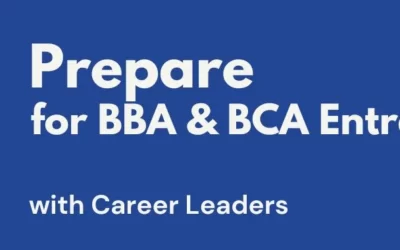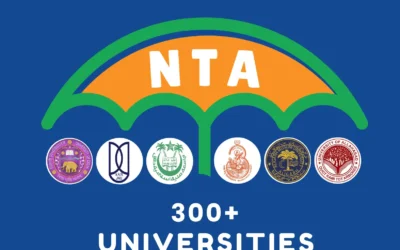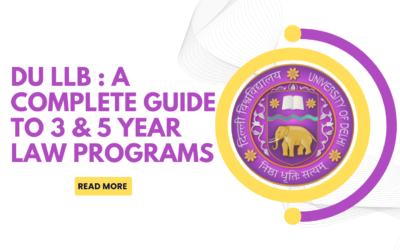The Bachelor of Elementary Education (B.El.Ed) is a specialized undergraduate program designed to train aspiring educators in elementary-level teaching methods and pedagogy. This program equips individuals with the necessary knowledge and skills to become effective elementary school teachers. However, one crucial aspect of eligibility for B.El.Ed programs is the age limit. In this comprehensive blog post, we will delve into the B.El.Ed age limit, explaining its significance, variations across institutions, and possible exceptions.
Understanding B.El.Ed
Before diving into the age limit for B.El.Ed, let’s first understand the program itself. B.El.Ed is a four-year integrated undergraduate program that prepares students to teach children in the age group of 6 to 14 years, typically covering classes from 1 to 8. This course focuses on subjects like child development, pedagogy, classroom management, and subject-specific knowledge, ensuring that graduates are well-prepared to be effective educators at the elementary level.
The Significance of Age Limit
The establishment of an age limit for B.El.Ed (Bachelor of Elementary Education) programs is a critical component that serves multifaceted purposes. It plays a pivotal role in maintaining a certain level of uniformity within the educational landscape and in aligning the educational background of aspiring teachers with the specific needs of elementary education. Let’s explore these reasons in more detail:
Relevance of Course Material:One of the primary reasons behind instituting an age limit is to ensure the relevance of the course material. The curriculum of B.El.Ed programs is meticulously designed to cater to the cognitive and developmental needs of elementary school children. These young learners have unique educational requirements, including distinct pedagogical strategies and an understanding of their evolving cognitive capacities. Younger candidates, typically closer in age to their prospective students, are more likely to connect with and comprehend these needs intuitively.
Career Longevity: Elementary school teaching is a profession that demands a substantial investment of time, energy, and commitment. It involves not just classroom instruction but also continuous professional development and engagement with diverse student populations. By implementing an age limit, institutions aim to ensure that candidates embark on their teaching careers at an age when they can sustain their commitment to the profession over the long term.
Adaptability: The realm of education is undergoing rapid transformations, driven by technological advancements and evolving teaching methodologies. Younger candidates typically exhibit greater adaptability and openness to integrating new teaching methods, educational technologies, and innovative pedagogical approaches into their practice. In today’s dynamic educational landscape, where flexibility and adaptability are key, younger educators are often better positioned to navigate these changes effectively.
Age Limit Variations
It’s crucial to recognize that the age limits for B.El.Ed programs can exhibit considerable diversity among different educational institutions. While some universities and colleges uphold stringent age restrictions, others adopt a more flexible approach. Here, we explore some common variations in age limits:
Upper Age Limit: A prevalent practice among educational institutions is the establishment of an upper age limit. Typically falling within the range of 21 to 25 years, this means that candidates above a specified age are not eligible to apply for B.El.Ed programs at those institutions. However, the precise age limit can vary significantly, necessitating prospective students to meticulously review the specific eligibility requirements of the institution they wish to apply to.
Relaxations for Reserved Categories: In certain instances, age limit relaxations are instituted to accommodate candidates belonging to reserved categories, such as Scheduled Castes (SC), Scheduled Tribes (ST), and Other Backward Classes (OBC). These relaxations are often mandated by government policies aimed at promoting inclusivity and equal access to education. Consequently, candidates from these backgrounds may have extended age limits, providing them with opportunities to pursue B.El.Ed programs and contribute to the diversification of the teaching workforce.
State-Specific Regulations: The landscape of B.El.Ed age limits can further diverge based on the region or state within a country. State-run educational institutions may adhere to age limit guidelines that are specific to their particular geographical area. Consequently, individuals planning to pursue the B.El.Ed program should thoroughly investigate the eligibility criteria established by the state in which they intend to undertake their studies, as these regulations may diverge from those set by other states.

Exceptions to Age Limits
Age limits for B.El.Ed programs are typically enforced to ensure uniformity and alignment with the unique needs of elementary education. However, there are circumstances where candidates may be exempt from these age restrictions:
Reserved Seats: Some institutions set aside a limited number of seats for candidates who exceed the age limit but meet other eligibility criteria. These reserved seats are often highly competitive and limited in number. Candidates who fall into this category may have an opportunity to pursue B.El.Ed, but they need to meet stringent eligibility requirements beyond age.
Experience-Based Exceptions: Certain educational institutions may consider candidates with relevant teaching experience, even if they are slightly older than the prescribed age limit. This is more likely to occur in private institutions or when candidates seek admission through management quotas. Teaching experience can be a valuable asset, demonstrating a candidate’s practical knowledge and commitment to the field.
Special Provisions: In exceptional cases, universities may establish special provisions for candidates who can demonstrate an unwavering dedication to elementary education, irrespective of their age. These cases are assessed on an individual basis and are relatively rare. Such provisions may involve an extensive evaluation of a candidate’s qualifications, achievements, and passion for the teaching profession.
Government Policies: In some instances, government policies and initiatives may override age limits to address specific educational needs or shortages of qualified teachers. Government-backed programs can provide opportunities for individuals who are older than the typical age limit to enter the teaching profession.
Entrance Examinations: Some institutions may place more emphasis on performance in entrance examinations rather than strict adherence to age limits. Candidates who excel in these examinations may be granted admission, even if they fall slightly outside the age limit.
Conclusion
The age limit for B.Ed programs is a crucial eligibility criterion designed to ensure that prospective elementary school teachers are suitably prepared and aligned with the specific needs of the profession. Although age limits can differ across institutions and regions, they are generally established to maintain program quality and relevance. It is imperative for prospective B.Ed candidates to research the specific age requirements of the institutions they wish to apply to and explore any exceptions or relaxations that may apply. An in-depth understanding of age limits and their intricacies will empower individuals to make informed decisions about pursuing a B.Ed degree and a fulfilling career in elementary education.
If you have any further questions or need additional guidance, please feel free to reach out our website [careerleaders.in]




































































































































































































































































































































































0 Comments